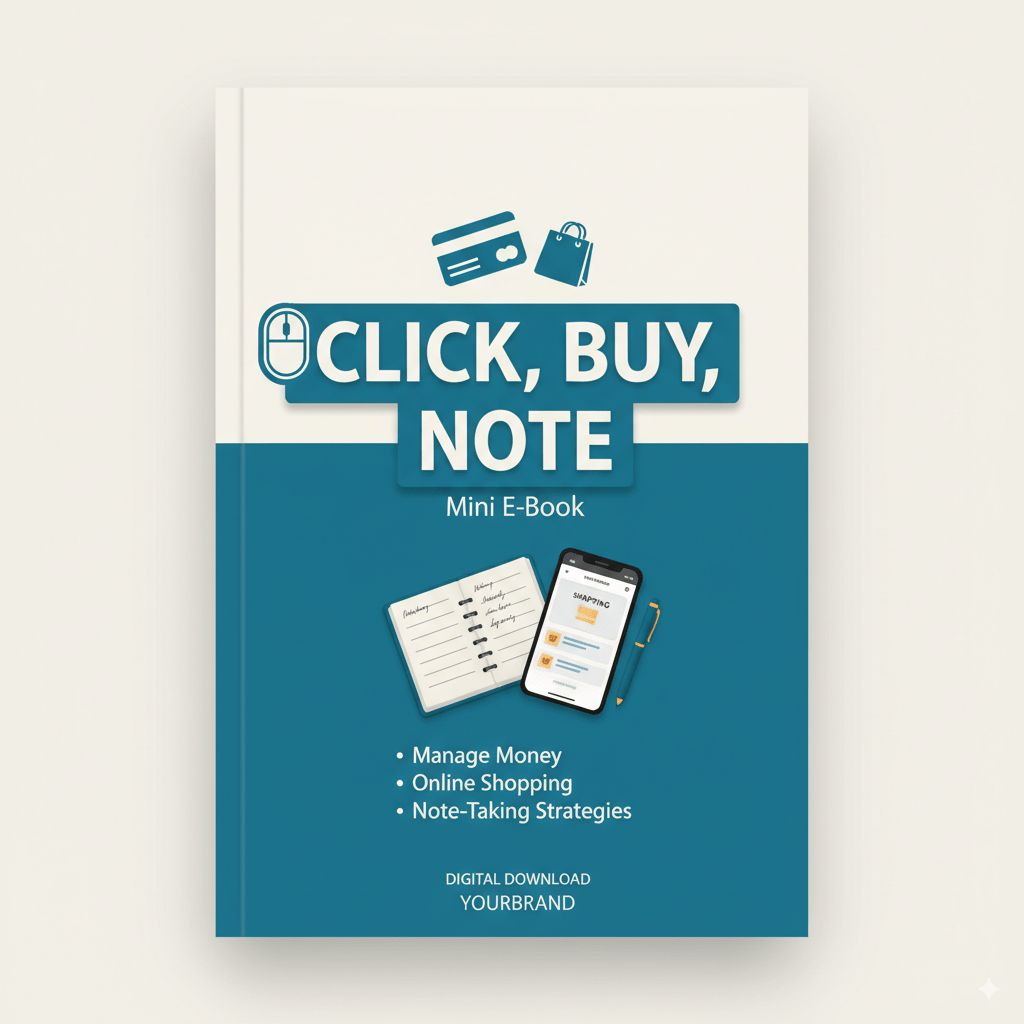- Ark's Newsletter
- Posts
- Click, Buy, Note: How to Take Control of Online Shopping Impulses and Safeguard Your Wallet
Click, Buy, Note: How to Take Control of Online Shopping Impulses and Safeguard Your Wallet
Online shopping has revolutionized convenience—but it’s also created a boulevard of temptation. With one click you can add items, apply discounts, pay instantly—and regret your purchase moments later.

If you struggle with impulse buys, feeling guilt over overspending, or just want a smarter, more intentional approach to your online shopping, this article is for you.

Why impulsive buying online happens (and how your brain is being tricked)
The digital environment feeds impulsivity
Online shopping platforms are designed to tempt. Researchers have identified multiple stimuli that push us to impulsive purchases:
Website cues like sleek visuals, scarcity messages (“Only 3 left!”), countdown timers, and smooth one-click purchases lower friction and raise urgency.
Marketing stimuli, including flash deals, time-limited discounts, “Buy now” prompts, and personalized suggestions, trigger emotional responses.
Affective stimuli such as excitement, positive mood, emotional arousal, and pleasure influence purchasing decisions. When shopping feels fun, we’re more likely to click without thinking.
In fact, one meta-analysis found that many of these factors are significantly associated with impulsive buying online.

The impulse “trap” is subtle
Impulse purchases rarely come from a place of deep need. Instead, they often result from:
Emotional states (stress, boredom, mood swings)
External triggers (ads, emails, push notifications)
A desire for instant gratification
Because these purchases feel so “easy” and often small, we dismiss them—until the total tab shocks us at month’s end.
The “Click, Buy, Note” method: Your prescription for mindful online shopping
To resist impulse temptation, you need pause + clarity + structure. That’s exactly what the Click, Buy, Note method provides:
Click — Add the item to your wishlist or cart. Don’t check out immediately.
Buy (Pause) — Delay purchase for 24–72 hours (especially for non-essentials).
Note — Write a short note (3–6 lines) answering key questions (Why do I want this? How often will I use it? Is there an alternative? Does it fit my budget? What’s the return policy?)
When the pause is over, revisit your note. If it still feels right, go ahead. Otherwise, let it stay in your wishlist (or delete it).
By externalizing your reasoning and adding friction, you turn impulse decisions into reflective ones.
What you’ll find in the “Click, Buy, Note” mini e-book + toolkit
When you get your hands on the full package, here’s what you receive:
An easy-to-read guide explaining the psychology behind impulse buying and why notes help
Printable Quick Note cards (cut-out or copy into your notes app)
A 30-day habit-building plan to internalize the method
Printable Budget & Purchase Log sheets to track your money
Decision checklists & prompts you can use before checkout
Advanced tactics (price tracking, return windows, regret audit)
Insights grounded in behavioral research to help you understand why it works
All optimally designed for printing or using digitally so you can pick what works best for you.
Proof from research: Why this method works
Implementation intentions (if-then plans) are well-supported in behavioral science. E.g. “If I add to cart, then I’ll write a note” boosts self-control.
Delaying a decision (24–72 hours) gives your rational brain a chance to weigh pros and cons.
Externalizing thoughts (i.e. writing a note) reduces bias, clarifies motivations, and boosts accountability.
Small friction (forcing a pause, requiring a note) can deter many impulse decisions before they start.
In short: combining delay + reflection + structured decision-making is a proven pathway to wiser spending.
How to get started today (your action plan)
Download your Click, Buy, Note toolkit now:Buy now on Payhip
Choose where you’ll keep your Quick Notes (notebook, notes app, digital file).
Commit to using the method for at least 30 days — track how many impulse avoids and how much you save.
Batch your non-urgent purchases (e.g. one “shopping day” per week or month).
At the end of each month, review your budget, compare planned vs. actual spend, and refine your rules.
Common challenges & how you can overcome them
“I’ll forget to revisit after 48 hours.”→ Use calendar reminders, or a habit tracker app that nudges you to come back.
“Sometimes I see deals that won’t last.”→ Remind yourself that good offers reappear. If you skip the purchase, you lose only the discount, not your money.
“I don’t like writing or it feels tedious.”→ Keep your note short — even two sentences help. Or use voice notes/typing if that’s more natural.
“My willpower is weak.”→ Use visual cues (sticky note on screen saying “Note first”), keep your note template in shortcuts, or use accountability (tell a friend, share your wishlist publicly, etc.)
Why this matters (beyond money)
You reduce financial anxiety and clutter
You build stronger self-discipline and awareness
You spend on things that really matter, not just “feel good” items
Over time, your impulse triggers lose power

Make your clicks intentional, not accidental.